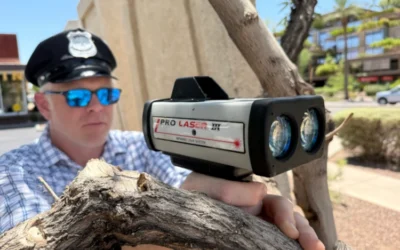Scottsdale Shoplifting Lawyers
What is the legal definition of shoplifting?
A. A person commits shoplifting if, while in an establishment in which merchandise is displayed for sale, the person knowingly obtains such goods of another with the intent to deprive that person of such goods by:
1. Removing any of the goods from the immediate display or from any other place within the establishment without paying the purchase price; or
2. Charging the purchase price of the goods to a fictitious person or any person without that person’s authority; or
3. Paying less than the purchase price of the goods by some trick or artifice such as altering, removing, substituting or otherwise disfiguring any label, price tag or marking; or
4. Transferring the goods from one container to another; or
5. Concealment.
In other words, a person commits shoplifting if they take something from a store without paying for it themselves or by paying less than they should for it.
Defenses to Shoplifting
The “knowingly” requirement.
The most fundamental defense to shoplifting it the intent requirement. Shoplifting requires that the act was committed “knowingly”. As you might imagine, knowingly means the person knew they were taking something without paying for it.
The “knowingly” presumption.
When someone is charged with shoplifting, there can be a presumption that the person “knowingly” committed the act:
B. A person is presumed to have the necessary culpable mental state pursuant to subsection A of this section if the person does either of the following:
1. Knowingly conceals on himself or another person unpurchased merchandise of any mercantile establishment while within the mercantile establishment.
2. Uses an artifice, instrument, container, device or other article to facilitate the shoplifting.
The presumption is going to apply when the person accused of shoplifting concealed the item in some fashion in order to remove it from the store.
A presumption means that the prosecution does not have to prove the person “knowingly” removed the item as long as they prove that the item was concealed. However, a presumption can be overcome by the defendant, but the burden of proof falls on the defendant to overcome the presumption. In other words, if a presumption of “knowingly” exists, the court will find the act was knowingly committed unless the defendant can prove otherwise.
It was an accident.
This defense acknowledges that something was removed from the store, but that that defendant did not know they were removing the item. Some possible situations might include:
The defendant was shopping at Home Depot. Defendant was holding something small like a screw. The defendant places the screw in their pocket so both of their hands are free to pick something else up to look at. Then the defendant forgets about the screw in their pocket and exits the store without paying for the screw. The defendant intended to pay for the screw, but forgot about it. The defendant did not knowingly remove the screw. Here though, there is a presumption of knowingly because the screw was concealed.
The defendant goes to a gas station. The defendant fills up on gas and pays at the pump. Then the defendant goes inside and gets a cup of coffee. Then the defendant gets a call on their phone about something serious. The defendant rushes out to their car and forgets to pay for the coffee. Here, the defendant intended to pay for the coffee, but got distracted and forgot. No presumption of knowingly applies because the coffee was not concealed.
Other Issues.
In any criminal case, we are looking for problems with the prosecution’s case. These could include reliability of the witnesses, availability of the witnesses, discovery violations, or other due process violations.
Diversion.
Diversion usually involves the defendant taking a series of classes within a particular period of time, and paying restitution to the victim. If the defendant successfully completes the classes and pays the restitution, then the prosecution dismisses the case. Diversion may be available in misdemeanor cases for first-time offenders.
Criminal Consequences for Shoplifting.
Consequences vary depending on the particular circumstances. Possibilities include:
Class 4 Felony.
“A person who in the course of shoplifting uses an artifice, instrument, container, device or other article with the intent to facilitate shoplifting or who commits shoplifting and who has previously committed or been convicted within the past five years of two or more offenses involving burglary, shoplifting, robbery, organized retail theft or theft” may be charged with a class 4 felony. See A.R.S. 13-1805(I).
Class 5 Felony.
“Shoplifting property with a value of two thousand dollars or more, shoplifting property during any continuing criminal episode or shoplifting property if done to promote, further or assist any criminal street gang or criminal syndicate may be charged as a class 5 felony. A “‘continuing criminal episode’ means theft of property with a value of one thousand five hundred dollars or more if committed during at least three separate incidences within a period of ninety consecutive days”. See A.R.S. 13-1805(H).
Class 6 Felony.
“Shoplifting property with a value of one thousand dollars or more but less than two thousand dollars” may be charged as a class 6 felony. Shoplifting a firearm that is worth less than two thousand dollars may also be charged as a class 6 felony. See A.R.S. 13-1805(H).
Class 1 Misdemeanor.
“Shoplifting property valued at less than one thousand dollars” may be charged as a class 1 misdemeanor. See A.R.S. 13-1805(H).
Other consequences.
In addition to any of the standard criminal consequences, the defendant will be ordered to pay restitution to the victim, and the court may order the defendant to perform community service.
Civil Consequences for Shoplifting
The victim may sue the person who shoplifted civilly for damages. Similarly, if the person who shoplifted is a minor, the victim may sue the minor’s parents or guardian for damages. See A.R.S. 13-1805(E) and (F).
Schedule a consultation
Use the form below to send us an email and we’ll reach out.
Latest Blog Posts
Understanding LIDAR Speeding Tickets in Arizona
Understanding LIDAR Speeding Tickets In Arizona You may have found this page because you just got a speeding ticket and the officer used LIDAR to measure your speed. LIDAR is a common tool in traffic enforcement in Arizona and it is often...
Why Misdemeanor Traffic Lawyers Beat General Criminal Defense Lawyers
Why Misdemeanor Traffic Lawyers Beat General Criminal Defense Lawyers A speeding ticket at 96 mph in Arizona isn’t just a slap on the wrist—it’s a criminal misdemeanor under Arizona law. But here’s the catch: general criminal defense...



